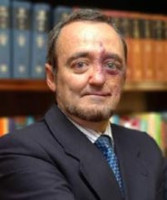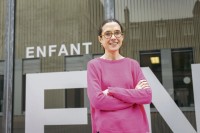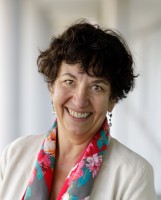Chronic & Non Communicable Diseases
Medical Treatment & Drug Development
Cancer
AXA Chairs
Spain
2011.06.22
AXA Chair in Molecular Oncology
Permanent AXA Chair Professor Mariano Barbacid is continuing his fascinating 40-year journey with K-Ras, an oncogene he discovered in 1982. Like all oncogenes, K-Ras has the potential to transform a cell into a tumor cell. Professor Barbacid’s pioneering work has paved the way for targeted therapies for some cancers, and more recent research efforts have led to the identification of druggable targets in lung, colorectal, and pancreatic cancers. With 1 in 5 cancer patients still dying from the K-Ras mutation, his continued devotion to this field of research could not be more precious.
K-Ras: A druggable target
As the most frequent mutation in cancers with the bleakest survival rates—lung, colorectal, and pancreatic cancer—K-Ras is of special interest to researchers around the globe. K-Ras was for almost 40 years thought to be an undruggable target, but the FDA recently approved a selective inhibitor, Sotorasib (Amgen). This is just the beginning of what Prof Barbacid expects to be an explosion of new drugs to treat cancers with the K-Ras mutation. That said, targeting these tumors remains a major challenge, and Sotorasib only works against one of the multiple K-Ras mutations—there is much yet to be done.
Genetically engineered mouse models of cancer
Understanding the process of tumor formation means that therapeutic strategies can be developed, such as “blocking” key players in the chain of events leading to tumor formation. To do this, Prof Barbacid works with genetically engineered mouse models, in which mouse DNA is manipulated to include the same mutations as those present in patients with cancer. This causes the growth of tumors that very closely resemble human tumors. Then, genes are eliminated one by one in these mice, and the effect upon the tumor is observed: if the tumor disappears, then this signals a potential target.
Identifying druggable targets
Signals from K-Ras oncogenes are transmitted via various kinases (enzymes that can alter other molecules), including RAF1 and EGFR. Professor Barbacid’s genetic studies have revealed that ablation of RAF1 results in significant levels of tumor regression of advanced lung adenocarcinomas, which are cancers that form in the glandular tissue that lines internal organs. RAF1 ablation in combination with EGFR also resulted in complete regression of some pancreatic cancers in the mouse tumor models used in his laboratory. As a first, he also found complete regression of advanced pancreatic ductal adenocarcinomas—the most common type of pancreatic cancer—upon combined inhibition of RAF1 and EGFR.
Drug discovery
After identifying druggable targets using these mouse models, it is possible to start a drug discovery process. Prof Barbacid’s lab recently discovered a structural vulnerability in RAF1 that could serve as a “pocket” in which to put a drug to destroy the protein. This is exciting given that there are not yet any drugs against RAF1, and it is one of Prof Barbacid’s main directions for future work.
Prof Barbacid’s lab is also testing a combination of drugs for the treatment of pancreatic cancer using “organoids,” which are 3D cultures originating from human tumors. To create those, surgeons send his lab pancreatic tumors, and the cells are grown in vitro in structures that resemble a tumor.
Different cancers, different treatments: targeted therapies
Each cancer type must be understood individually according to its pathology, stage, metastatic status, and underlying mutations. This is reflected in the development of targeted therapies, which is a relatively recent endeavor in which each target needs its own drugs. The first targeted product for the treatment of certain types of breast cancer, Herceptin, was approved in 1998, and there are now targeted therapies for many different types of cancer.
According to Prof. Barbacid, the very recent advent of immunotherapy (a non-targeted therapy) has probably become the best therapy for many cancer types in that the same antibody can be used to treat many cancer types. However, a limitation is that it works in some cases and not in others, and scientists still don’t know why.
October 2022
Learn more about Prof. Barbacid's research project

Mariano
BARBACID
Institution
Centro Nacional de Investigaciones Oncológicas
Country
Spain
Nationality
Spanish
Related articles
Chronic & Non Communicable Diseases
Medical Treatment & Drug Development
Chronic Pain & Musculoskeletal Disorders
Drug Delivery
Biotech- and Nanotechnology
AXA Project
France
Pain Pediatric & Elderly AXA Research Lab (PEARL)
Chronic pain is recognized as a major public health problem affecting patients in their daily activity, physical and mental health,... Read more

Celine
GRECO
Hôpital Necker-Enfants Malades
Medical Treatment & Drug Development
Drug Delivery
Biotech- and Nanotechnology
Mécénat des Mutuelle
France
Accelerating drug innovation with the Euridis school and its DDD Challenge
The project addresses a dual challenge: on one hand, the increasing complexity of drug development, which requires a thorough understanding... Read more

Laurence
SABATIER


.thumbnail.jpg)